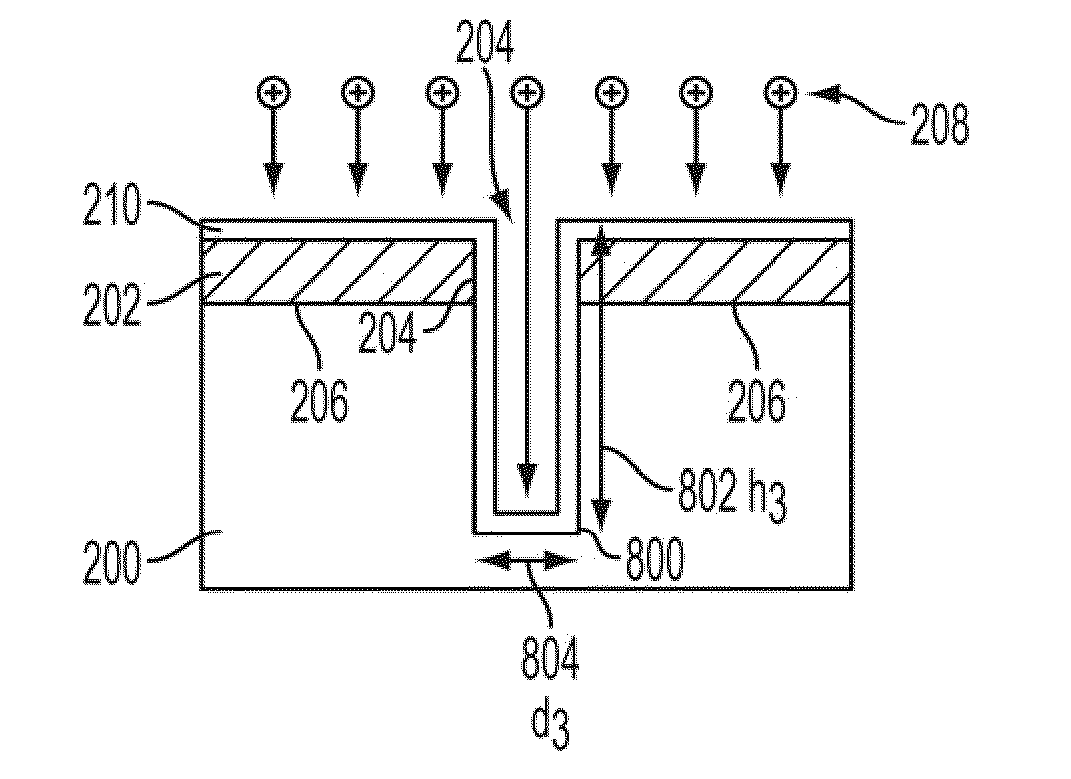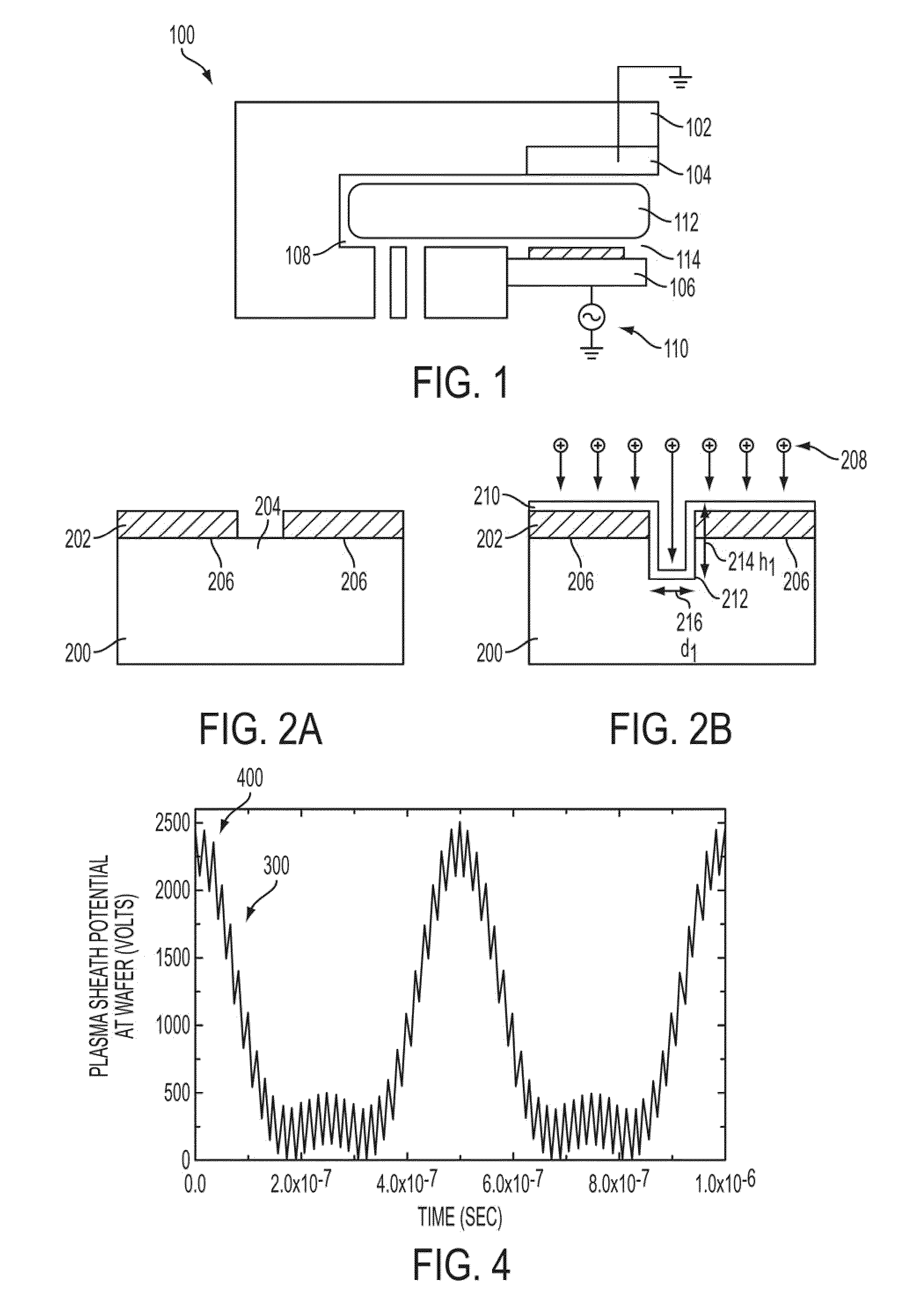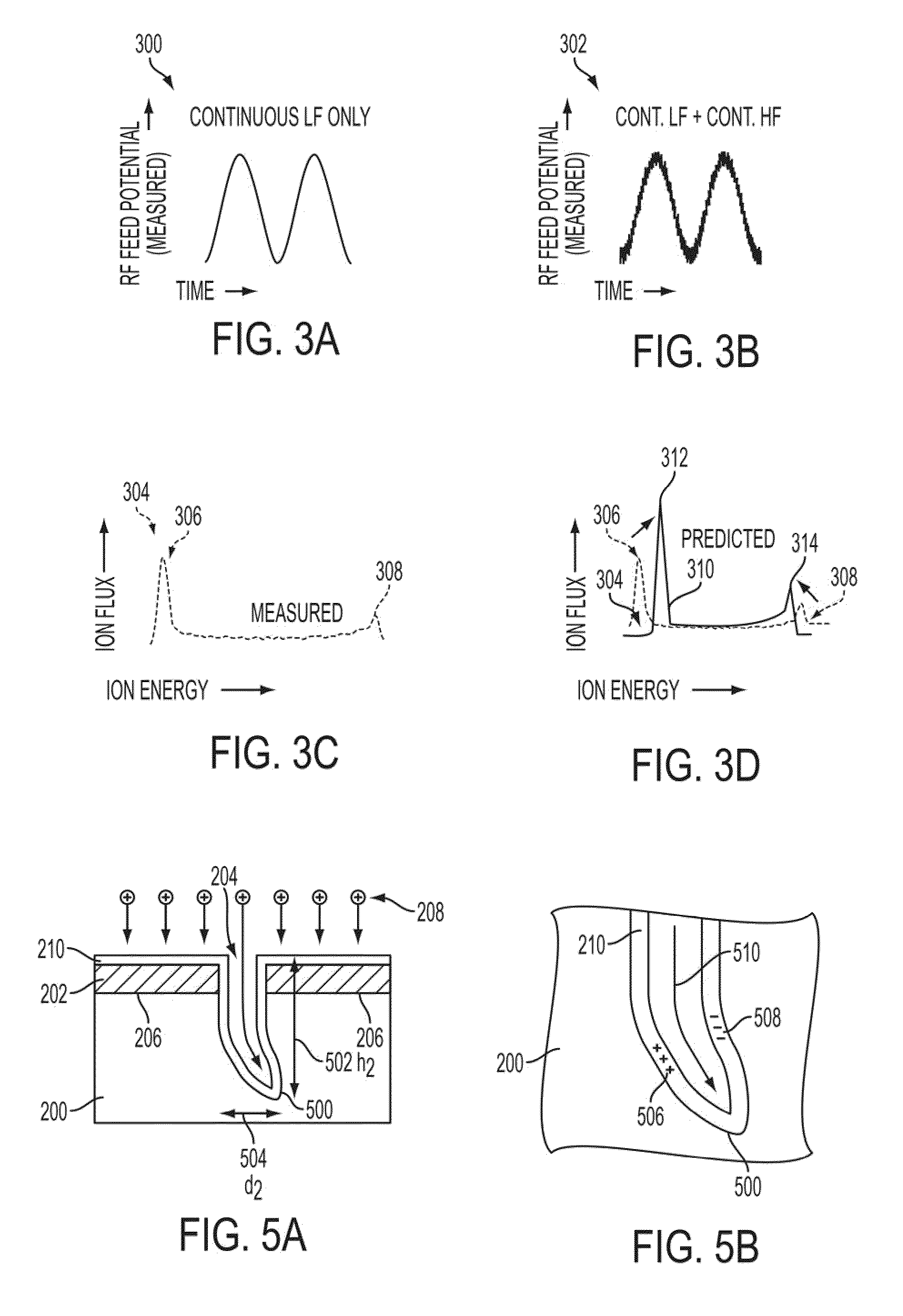Modulated multi-frequency processing method
a multi-frequency processing and modulated technology, applied in plasma etching, electric discharge tubes, light sources, etc., can solve the problems of reducing feature charging, etching such narrow and deep features, and reducing feature charging, so as to reduce the dispersion of etched contact holes, reduce the selectivity of contact to mask etching, and reduce the polymerizing properties of the process.
- Summary
- Abstract
- Description
- Claims
- Application Information
AI Technical Summary
Benefits of technology
Problems solved by technology
Method used
Image
Examples
Embodiment Construction
[0043]In accordance with an aspect of the present invention, a system and method provides for best HARC etch with no contact hole distortion, while maintaining a high etch rate for high throughput. More particularly, in accordance with an aspect of the present invention, a processing system that is operable to generate a plasma by way affecting a gas with an electromagnetic field, is operated in a particular manner to control a parameter as a function of time that is based on a low frequency sinusoidal portion and a high frequency sinusoidal portion. The high frequency sinusoidal portion is amplitude-modulated at a frequency equal to a harmonic of the low frequency sinusoidal portion. Further, the high frequency sinusoidal portion includes a high amplitude interval and a low amplitude interval. The duration of the duty cycle of the high frequency sinusoidal portion is the ratio of the duration of the high amplitude interval to the sum of the duration of the high amplitude interval a...
PUM
 Login to View More
Login to View More Abstract
Description
Claims
Application Information
 Login to View More
Login to View More - R&D
- Intellectual Property
- Life Sciences
- Materials
- Tech Scout
- Unparalleled Data Quality
- Higher Quality Content
- 60% Fewer Hallucinations
Browse by: Latest US Patents, China's latest patents, Technical Efficacy Thesaurus, Application Domain, Technology Topic, Popular Technical Reports.
© 2025 PatSnap. All rights reserved.Legal|Privacy policy|Modern Slavery Act Transparency Statement|Sitemap|About US| Contact US: help@patsnap.com



